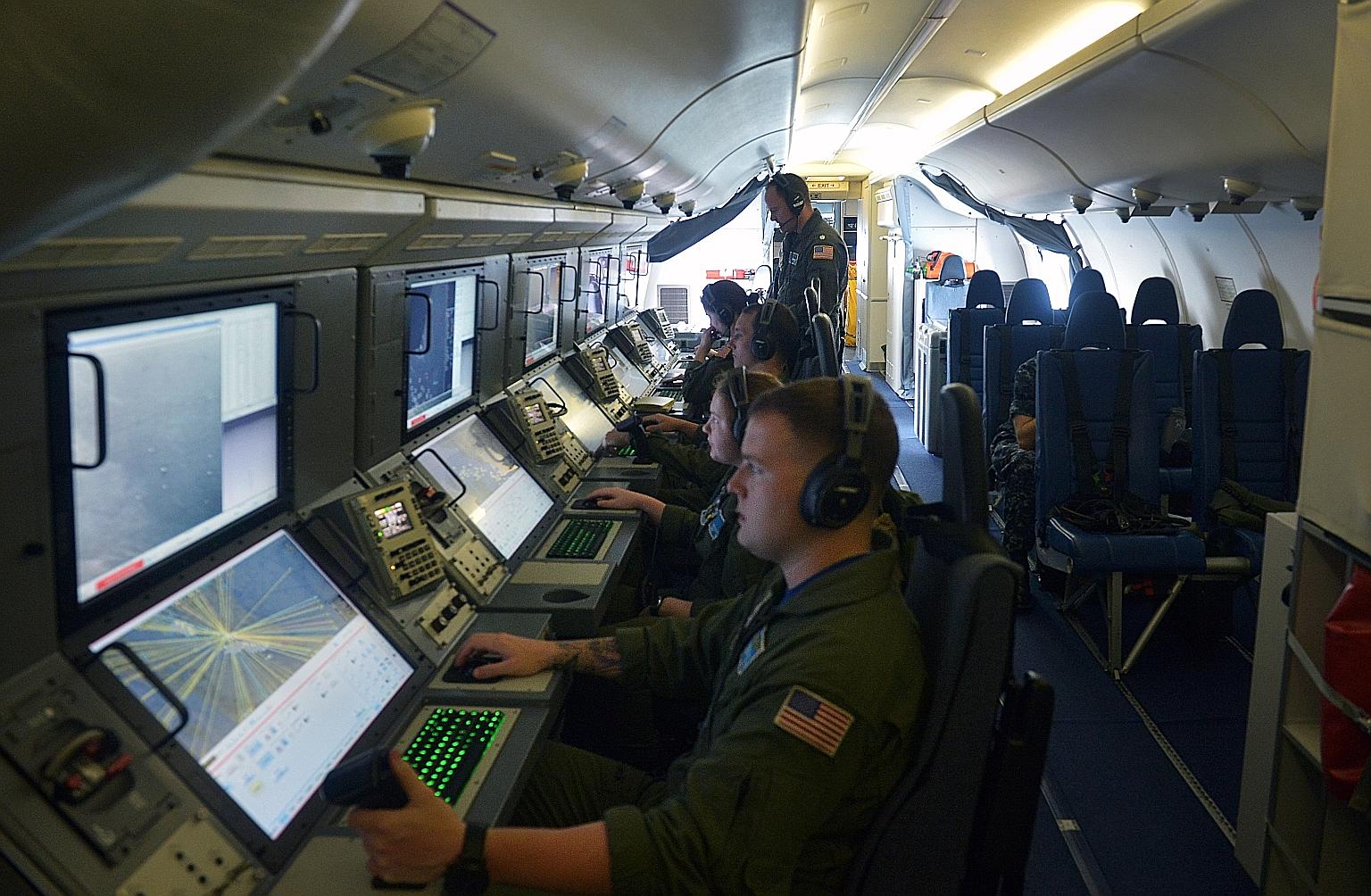US surveillance planes deployed here till next month for exercises
Sign up now: Get ST's newsletters delivered to your inbox

The P-8 planes will be involved in anti-piracy, search-and-rescue and humanitarian exercises, said a spokesman for the US Seventh Fleet. They will operate from Paya Lebar Air Base during their time here.
ST PHOTO: KUA CHEE SIONG
Jeremy Koh
Follow topic:
Two advanced United States surveillance planes are involved in naval military drills conducted with the Singapore Armed Forces (SAF) and are deployed here until next month.
Defence analysts welcomed the move, saying these P-8A Poseidon maritime patrol aircraft are technologically advanced and will provide Singapore's military with valuable experience.
The planes will operate from Paya Lebar Air Base during their third detachment here, which started on July 15 and ends on Aug 12.
During their time here, they will be involved in exercises relating to search-and-rescue, anti-piracy, and humanitarian assistance, said Lieutenant-Commander Arlo Abrahamson, a spokesman for the US Seventh Fleet.
In one of the military drills held here, a P-8 first determines the location of a simulated vessel and then communicates this to ships and aircraft that are part of the exercise, he said.
Such vessels can represent a ship suspected of smuggling, or a vessel lost at sea, Lieutenant-Commander Abrahamson added.
Defence analysts said there were benefits for the SAF to work with the surveillance planes.
Training with them will "expose (the SAF) to new technology and help us evaluate our future defence needs", said Dr Collin Koh, a research fellow and maritime security analyst at the S. Rajaratnam School of International Studies (RSIS).
Singapore's maritime patrol and surveillance aircraft are weaker in surveillance range and capability relative to the P-8, he said. They cannot remain airborne for as long as the P-8 can without refuelling, and have a lower offensive capability.
Also, with Singapore allowing the P-8s temporary use of the SAF's facilities, this can have a stabilising effect on the region, Dr Koh said.
The P-8s can train and share information not just with Singapore's forces but also those of Singapore's neighbours during their time here, he added.
The surveillance plane deployments also show Singapore wants the US to remain engaged in regional security and regards it as its primary security partner, said Dr Koh.
"What we are doing... is practically facilitating the US (in its) rebalancing to Asia," he said.
Agreeing on the stabilising effect the US military's presence has, RSIS research fellow Wu Shang-su added that the P-8 deployment here is also a "moderate" way for the US to demonstrate its commitment to the region.
The P-8 is not as aggressive as a fighter jet or bomber and is associated more with military surveillance, he said.
Asked whether the training exercises that the P-8s are engaged in here will be influenced by recent developments in the South China Sea, Lieutenant-Commander Abrahamson stressed that they would not be.
Instead, the exercises are meant for the broader purpose of improving the abilities of the US and Singapore navies to work together in a "broad host of contingencies", he said.
"(The P-8's deployment here) is not aimed at the South China Sea or any recent tensions. It's about working with our partners".
China and several South-east Asian countries have competing claims over territory in the South China Sea.
Earlier this month, a United Nations-backed arbitral tribunal invalidated a key component of China's claims in the South China Sea.
Correction note: This story has been edited for clarity.

